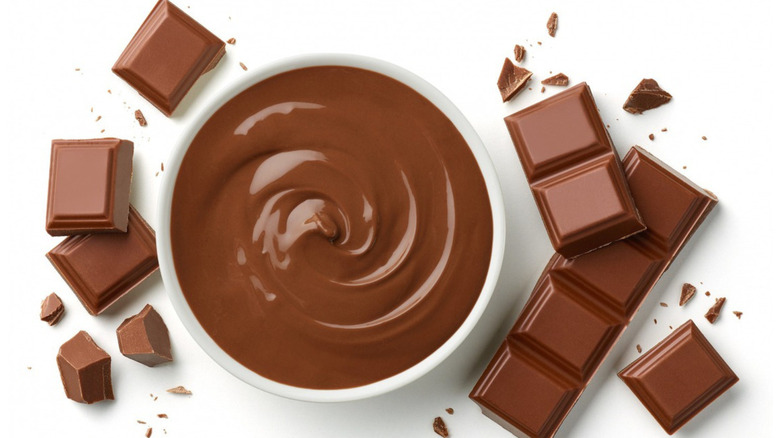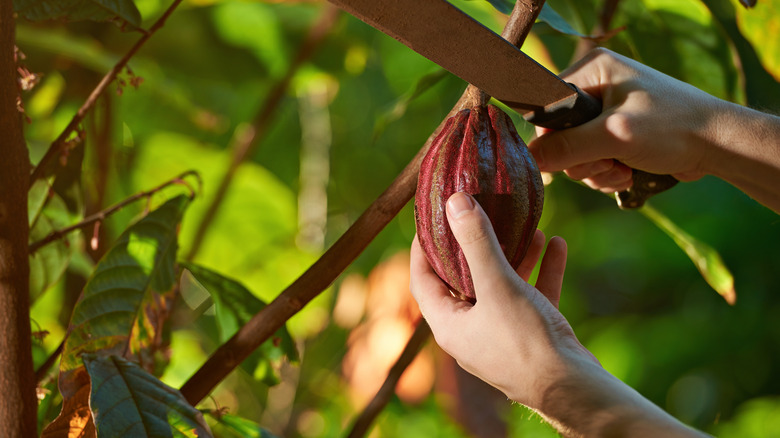Why The Birthplace Of Chocolate May Not Actually Be Mexico
The history of chocolate is as rich and complex as the wide variety of luscious chocolate flavors that exist today. Ever since the Americas were first explored during the Age of Discovery, the world became fascinated with this sweet delicacy, and the demand for it continued to grow. Most fans who crave this beloved treat might give credit to the Mayans for its creation, but its origin actually goes back even further than that.
Cacao plants were discovered in Mesoamerica 4,000 years ago and were eventually transformed into chocolate, which tasted so heavenly that it was considered to be the preferred "food of the gods." As a gift from the divine, chocolate was consumed as a sacred drink in religious ceremonies, and valued also for its medicinal benefits. But before the Mayans documented it, one of Latin America's oldest cultures got to it first — the Olmecs of Mexico. This pre-Columbian civilization existed for around 800 years and dates back to 1200 B.C. We have them to thank for bringing the world's first domesticated version of cacao, known as criollo, to the Mayans of Guatemala who were able to document it fully. Thus, Guatemala was dubbed "the birthplace of chocolate".
In short, though the Olmecs discovered chocolate, the Mayans often receive recognition, since they were the first to record it in all its glory. There's one major reason for this chocolate myth, and it has to do with the Olmec society's level of progress at the time.
The Mayans developed more advanced language and writing
No language? No problem. The Olmecs didn't have a written language, so they decided to bring their chocolatey achievement to those who did. The Mayans were then able to document the process of refining cacao for history to find. This is why the Mayans often take credit for discovering and cultivating the cacao plant. Like the Olmecs, the Mayans sipped their chocolate during rituals and used it for medicine and even as an aphrodisiac. They liked to infuse their chocolate with a spicy chili kick, sweet honey, or they simply consumed it in the form of a creamy "xocolatl" drink, which translates to "bitter water."
Chocolate was so precious that it was generally reserved for the wealthy. And speaking of wealth, Guatemala was already using it as currency, which Christopher Columbus' son hilariously mistook for nuts. He wrote that the Guatemalans "seemed to hold these almonds at a great price," recalling that "when any of these almonds fell, they all stooped to pick it up, as if an eye had fallen," (via Culture Trip).
Pretty soon, the rest of the world was utterly seduced by chocolate's delicious versatility and ran with it. These days, chocolatiers continue to carefully craft and improve their bean-to-bar chocolates, and the world still worships chocolate, just a little differently.

